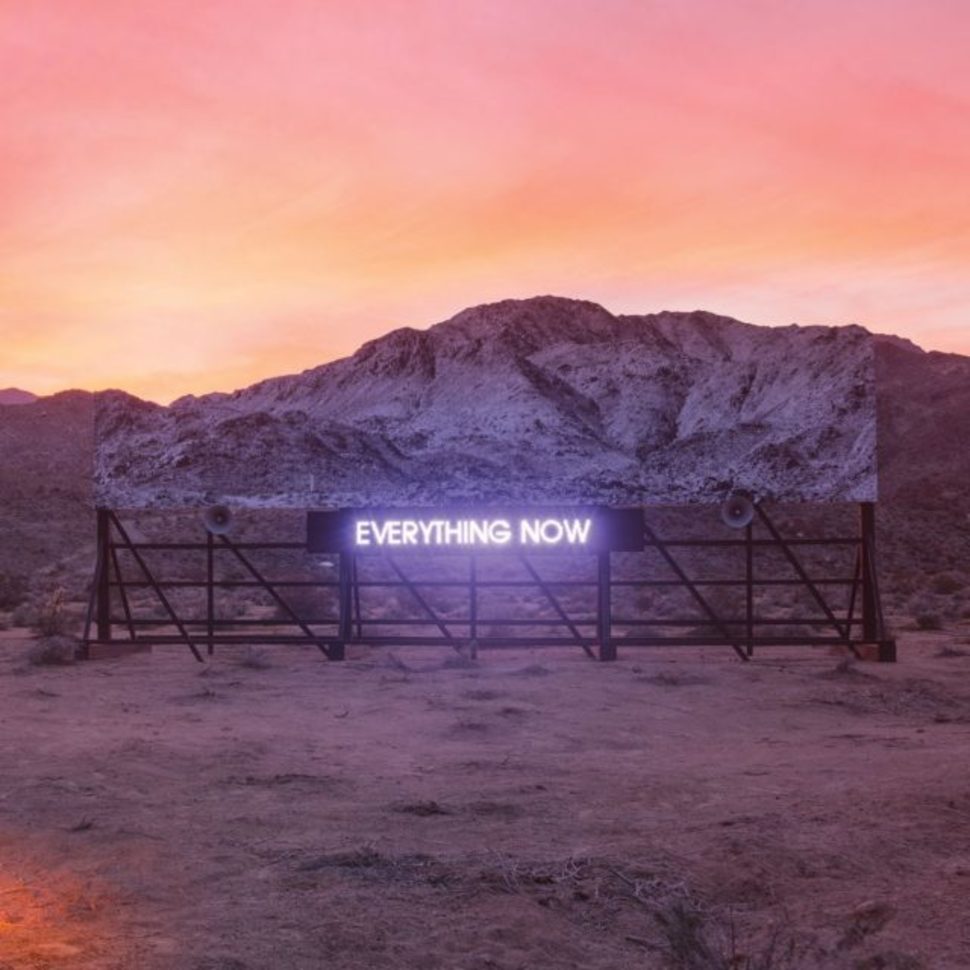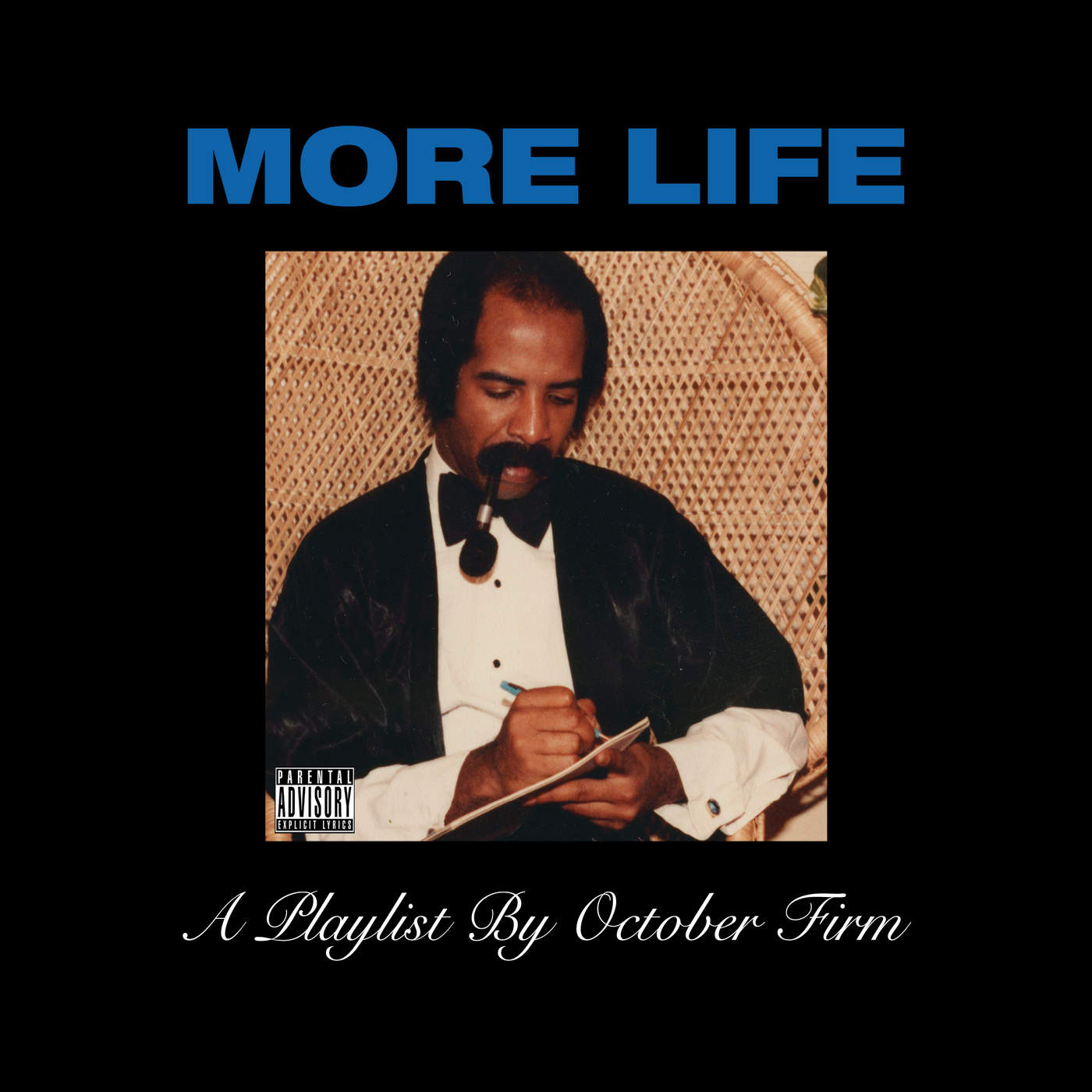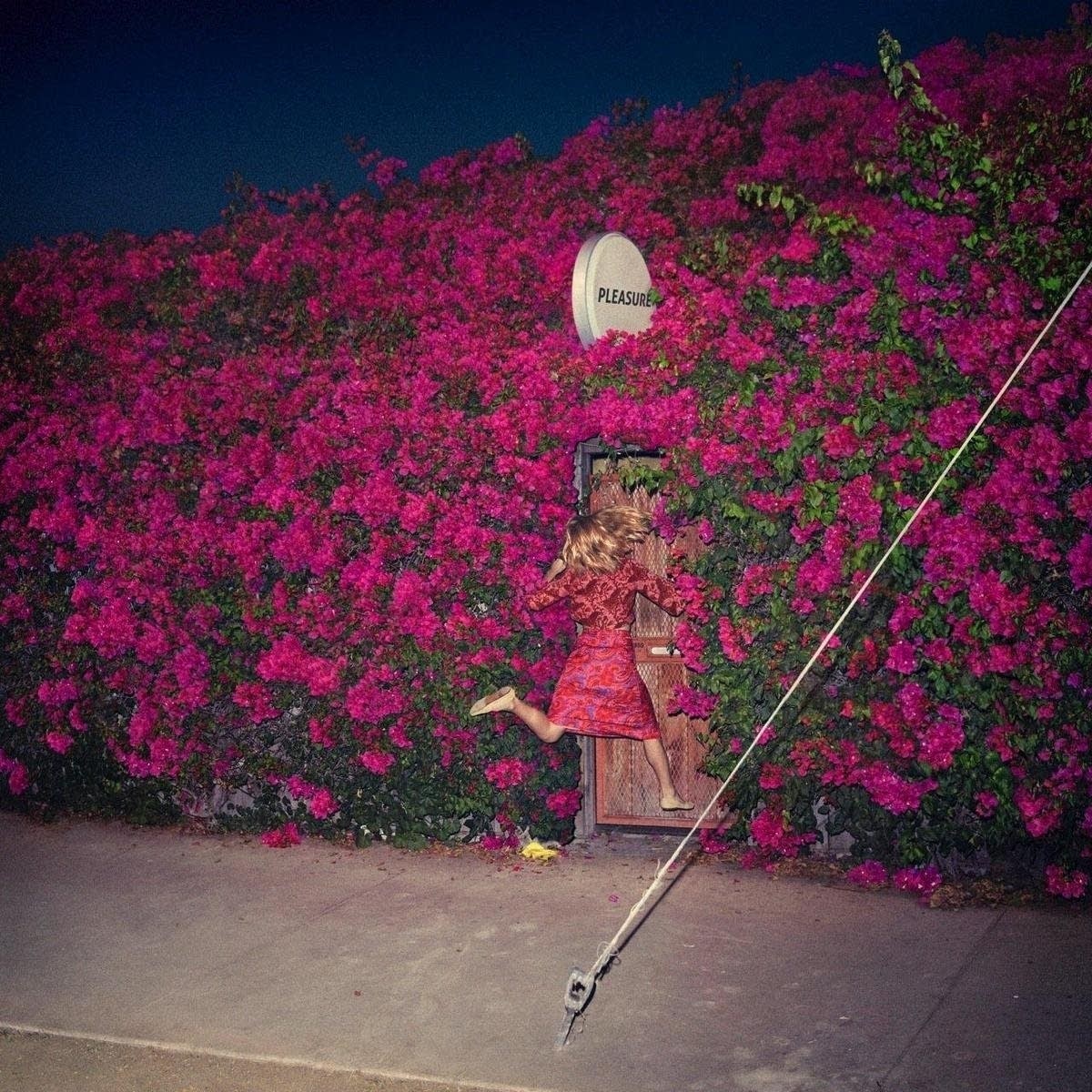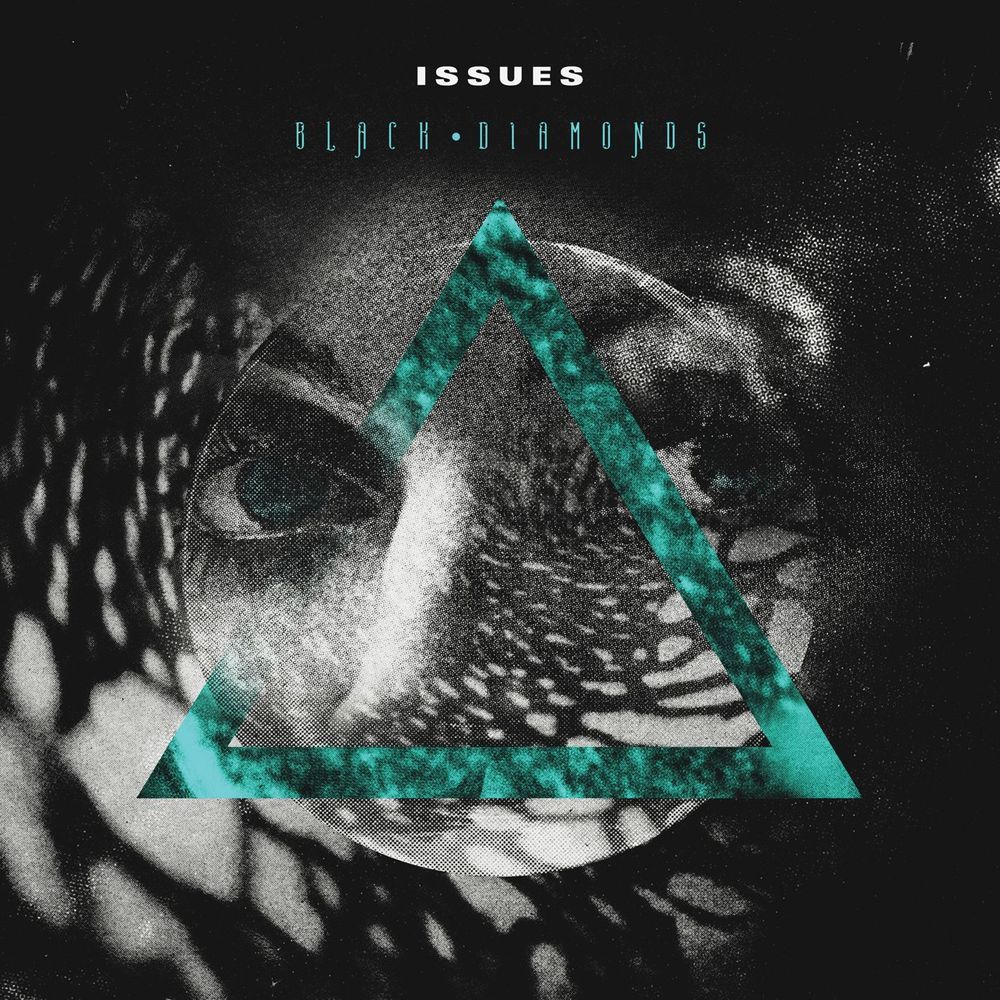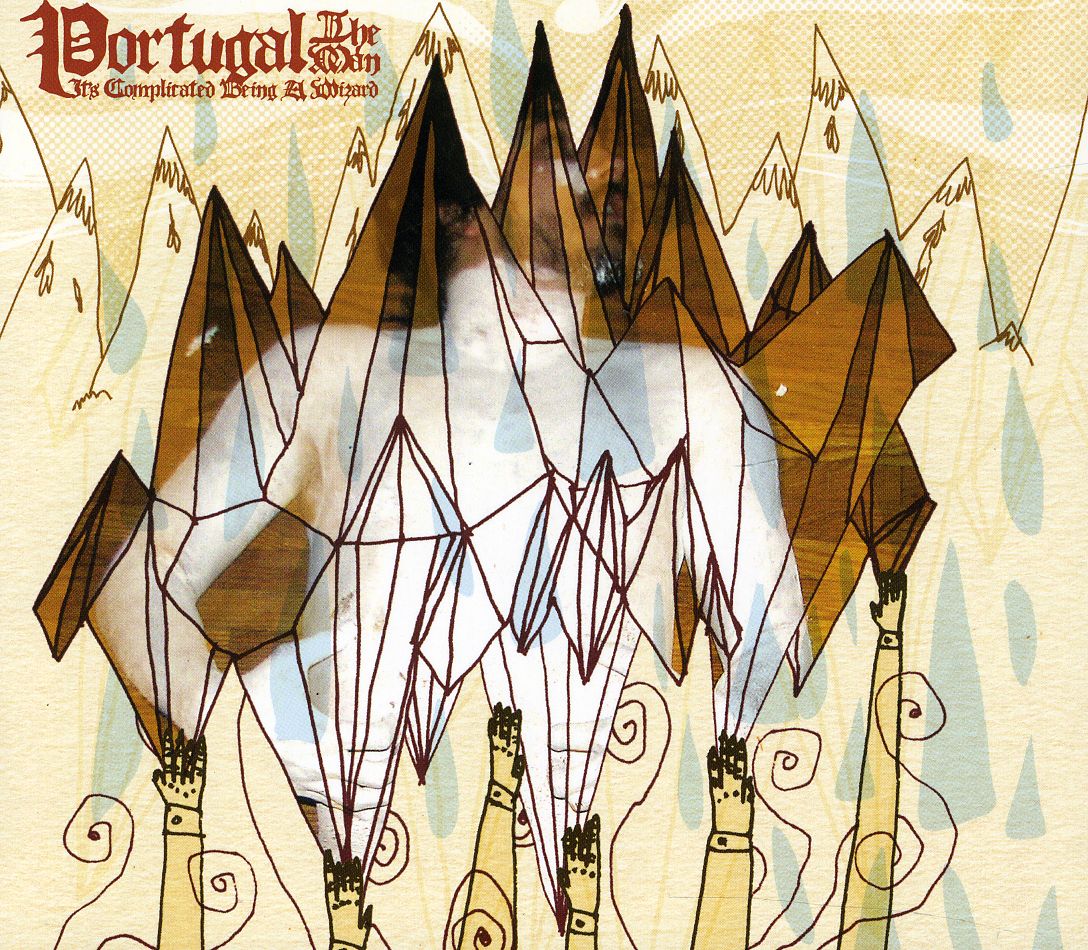Swim Into The Sound’s 2017 Un-Awards
/Welcome to Swim Into The Sound’s first annual Un-Awards! In this direct (and more negative) companion piece to our Diamond Platters, we take a moment to reflect on some of the worst moments in music over the past year. From bad lyrics to tasteless cover art, this is a quick-hit version of the lowest points that 2017 had to offer.
In a year where we keep thinking “well, at least things can’t get any worse” 2017 always managed to surprise us. From politics and celebrities all the way down to movies and music, this was a year of general-purpose deplorable behavior and reprehensible choices. While there were plenty of good moments over the past 365 days, you will find that none of that light reaches these depths. This post is a place of darkness, a hell devoted solely to the most soul-crushing and life-questioning music of the year.
I’d also like to throw out a disclaimer that I don’t particularly like being pessimistic, especially when it comes to art that people have (presumably) worked hard on. Aside from that, negativity stands in direct opposition to the ideals that this website was founded on in the first place. What I’ve found is that it’s hard to talk about the good without also thinking of the bad, especially for a year like 2017. As I mentioned before, the previous post is the exact inverse of this one, and the next article going up will cover our favorite albums of the year, so if you are searching for affirmation, this is not the place to find it. Just think of this as the lone negative meat in a positivity sandwich.
Truth be told, aside from a few visibly-frothy entries, most of these awards are positive spins on negative experiences: moments that surprised me, music I’m embarrassed to enjoy, or weird synchronicities that I noticed throughout the year. I could have gone out of my way to shit on Katy Perry, The Chainsmokers, Imagine Dragons, or any number of middling radio-ready albums that were released this year, but at a certain point that all just feels redundant and hack. I prefer to be original in my distaste. So without any further adieu, I’m proud to present Swim Into The Sound’s list of the most spine-chillingly-regrettable music of 2017.
Biggest Disappointment
Winner: Queens of the Stone Age - Villains
Being a fan is a mixed blessing. The upside is that you get to enjoy the rollercoaster of hype that is an album rollout and you get the sweet experience of listening to a highly-anticipated album for the first time when it releases. On the flip side, that fandom can easily backfire if your expectations have been built up too high. While I love Queens of the Stone Age, in 2017 I fear that I may be outgrowing them. The group’s 2004 release Songs for the Deaf is literally my favorite album of all time, and there’s no higher praise than that. Each record since then has been good to great until 2013’s …Like Clockwork which just didn’t sit right with me outside of a select few songs.
This year, the group’s seventh LP represents a new artistic low. Featuring limp “dancy” grooves, irritatingly-clean instruments, and some of the most laughable lyrics I’ve ever heard, the band we see on Villains bears little resemblance the one that I fell in love with years ago. I recognize that wanting a band to stay the same is a shitty thing for a fan to ask, but I just can’t understand, enjoy, or tolerate the direction that the group is headed. I’m a lifelong fan, but that makes these recent records hurt all the more. When you love a band, you devour each release that they put out. Even if the last few records haven’t hit as hard, you stick with them because you want them to be better. The excitement of something new is impossible to stay away from, but now after months of listening, all I want is for Villains to stay away from me.
Runner-up: Portugal. The Man - Woodstock
While I wrote glowingly about Portugal. The Man’s entire discography last month, Woodstock (while not bad) is not an album that I particularly wanted. It’s not the band’s worst, but it’s the most sterile, safe, and poppy album that the group has ever created. Outside of a handful of adrenaline-pumping car-ready songs, Woodstock takes no risks. The album breaks no new ground, asks nothing of its audience, and seems entirely too content to settle. While those qualities are the exact opposite of what I expect from the trailblazing Portlanders, I’ll hold my reservations until I hear what comes next.
Album I Feel Like I Will Adore In A Few Years
Winner: Fleet Foxes - Crack-up
Until earlier this year I never particularly liked Fleet Foxes. In preparation for their 2017 release, I found myself endlessly replaying the group’s self-titled LP alongside Helplessness Blues while doing other things. Somewhere along the line “inoffensive background music” turned into brilliant folk epics, and I finally understood what made the band so unique. However, in a Bon Iver-esque pivot, Fleet Foxes’ third LP Crack-up represents an experimental shift in sounds, and unfortunately, it’s a change that doesn’t sit particularly well with me. There are some awe-inspiring moments scattered throughout this record, but as a whole, it’s not a release that stuck with me in the slightest, let alone one that can hold a candle to the band’s earlier work. I recognize that there’s something special going on in Crack-up, but I feel like it will just take some time for me to properly excavate it, just as I did with the group’s first two records.
Runner-up: Sun Kil Moon - Common As Light and Love Are Red Valleys of Blood
Sun Kil Moon is another artist that I’d never listened to until 2017. After hearing this year’s mouthful of an album Common As Light and Love Are Red Valleys of Blood, I came away pleasantly surprised. Featuring solemn, looping instrumentation and long podcast-like narration by Mark Kozelek, I listened to all two hours and ten minutes in complete fascination. I dipped back into his previous work like Benji and loved it just as much, but for whatever reason, I never ventured back into Valleys after that first listen. Maybe it was the album’s lengthy running time or the idea that the narration would prove too distracting for a casual listen, but Valleys always felt too daunting to dive back into. I feel like one day when I’m a middle-aged dad with a couple of kids I’ll finally have the time to revisit this album and it will speak to me on an entirely new level. The songs and stories here feel like something that I will find solace in when I’m older, but I just don’t have the 2+ hours right now.
WTF Moment of the Year
Winner: Bhad Bhabie
Of all the memes to emerge from 2017, few have been as successful as 14-year-old Danielle Bregoli. She first gained traction in January thanks to a Dr. Phil clip in which Mrs. Bregoli challenged an audience member to “cash her outside.” The teen’s delivery of the phrase caught fire and became a meme/infinitely-renewable social media caption for a hot minute. One of the more perplexing news stories of 2017 (and that’s saying something) was Danielle’s announcement of her music career as “Bhad Bhabi” complete with a deal on Atlantic Records. Preceded by an appearance in a Kodak Black video, this announcement blindsided the music world and spawned a million think pieces. However when Bregoli released her first song in August the unthinkable happened: It wasn’t that bad.
The video for “These Heaux” was the first part of a one-two punch alongside “Hi Bich” that set social media ablaze in September. As everyone collectively remembered the months-old meme from what seemed like a lifetime ago, most people took this as an opportunity to laugh at her once again. Meanwhile, I watched the same videos as everyone, and recognized it as bad music, but found myself embarrassingly enjoying both songs. “Heaux” and “Hi Bich” are both competent and well-produced Rae Sremmurd-esque bangers that, yes, are propped up by production, but still enjoyable. The truth is, they’re musical fast food. It’s not nutritious, healthy, or even filling, but sometimes you just need to bask in the utter trashiness that is Bhad Bhabie.
Runner-up: Lil Pump
Earlier this year I wrote a 3,000-word post in which I attempted to reconcile my newfound love of trap with my extreme dislike of the current crop of SoundCloud rappers. While that write-up was primarily inspired by the reprehensible human being that is xxxtentacion, I now regret lumping Lil Pump into the same category. While his brand of blown-out hyped-up trap is of the same school as xxx, Lil Pump isn’t nearly as bad on a personal or musical level as Onfroy. More surprisingly, I actually found myself liking his breakout single “Gucci Gang” more than I am comfortable admitting. Featuring a worryingly-mindless chorus and the same laundry list of flexes as most trap hits, “Gucci Gang” manages to be an infectious banger that has also propelled Pump to the forefront of both the charts and popular culture.
Most Un-sexy Sex Song
Winner: Alt-J “Hit Me Like That Snare”
In an interview with Q Magazine, Alt-J’s lead singer Joe Newman described “Hit Me Like That Snare” as an “atypically filthy psychedelic grind.” Wow, guys. Wow. If you want to avoid listening to the song, I don’t blame you. All you need to know about this track is that the band rhymes “slithering” with “scissoring” (yes, that kind), and the lead singer describes the song as “spicy.” Whew.
Runner-up: DJ Khaled “Wild Thoughts”
While I thought “Wild Thoughts” was exceedingly-sensual on first listen, the song now has too many things working against it for me to find any titillation here. From Rihanna’s baby talk to memories of dancing hot dogs, I just can’t listen to this song without picturing Santana’s face, or DJ Khaled screaming. The single achieved a level of cultural-pervasiveness so quickly that it became saturated beyond its original artistic vision. God knows I have no problem with DJ Khaled, but this track now contains too many distractions to remain pure. The music video is still unspeakably steamy, but as a whole, “Wild Thoughts” has lost what little sexy luster it initially had.
Am I The Only One Seeing This Shit?
Winner: Rappers Counting
I’ll admit that this category was created with the sole purpose of repurposing already-written articles, but that doesn’t make the observations contained within them any less valid. The first of these two hyper-specific happenings of 2017 can be found in this article where I outline three examples of rappers using numbers as lyrics. Not like clever wordplay involving numbers, but counting upwards sequentially one numeral at a time. It’s a weird thing to have happened multiple times in one year and feels like such a lazy cop-out of songwriting, but at the same time, each artist in the list manages to make it work for one reason or another.
Runner-up: 21 Savage’s Food Lyrics
Another weirdly-specific phenomenon of 2017 is something that I noticed while listening to 21 Savage’s debut Issa Album over the summer. Despite his tough gangster exterior and dark, moody beats, 21 also managed to fit an alarming number of food references into his first retail outing. While not particularly jarring, these references provide a weird contrast to the rest of the Mr. Savage’s “murder music” and end up sticking out like (multiple) sore thumbs throughout the record. It happened just consistently enough that I began laughing every time they poked up, and I felt the cosmic need to compile them somewhere, so I did.
Most Insensitive and Heavy-handed Song about Suicide
Winner: Arcade Fire “Creature Comfort”
On this second single off Arcade Fire’s Everything Now, we hear Win Butler clumsily address the topics of suicide and self-harm. The song’s first verse explains “Some boys hate themselves / Spend their lives resenting their fathers / Some girls hate their bodies / Stand in the mirror and wait for the feedback.” Taken on their own, these lines aren’t particularly offensive, but it’s the second verse where things get truly tactless: “Assisted suicide / She dreams about dying all the time / She told me she came so close / Filled up the bathtub and put on our first record.” I mean, what a pretentious and shitty way to insert yourself into someone else’s misery. It’s such a bizarre form of narcissism and masturbating to your own past, this line truly is one of the grossest sentiments that I’ve heard put to music over the past year.
Runner-up: Brand New “Same Logic / Teeth”
While it’s true that suicide isn’t exactly a groundbreaking topic for an emo band, Brand New somehow manages to stumble over it fantastically one of the few times that they tackle the subject. Surrounded by excellent songs of diverse sounds, styles, and topics, “Same Logic / Teeth” sticks out as Science Fiction’s most significant blunder. With questionable lyrics, bizarre vocal choices, and overwrought sentiments, it’s easy to see why most bands would prefer not write songs about killing yourself because the only time I have ever wanted to end my life is when I’m hearing Jesse Lacey sing about how fish won’t judge me by my faults.
WTF Moment of the Year 2: Weird Boogaloo
Winner: Vulfpeck “Captain Hook”
Venturing back to the “WTF Well” for two more entries, another of 2017’s biggest surprises came at the end of Vulfpeck’s Mr. Finish Line. The band’s third full-length studio album is a stone-cold chiller, but after half an hour of unspeakably funky tracks, “Captain Hook,” the record’s final song threw me (and every other listener) for a massive loop. Teased as a collaboration with Bootsy Collins, most fans expected a brainwave-shifting epic of an album closer, a modern “I’d Rather Be With You” but with even tighter instrumentation. What we got was a goofy comedy track featuring two of Vulfpeck’s members affecting the voices of an infant and an old Jewish man. Bootsy’s contributions are noticeable but minimal, and as a whole, the track is just a fantastically-bizarre experiment. “Captain Hook” is a weird child-like song featuring a trio of the three most disparate voices you could ever imagine, however (now that I know what to expect), I absolutely adore the song. It’s such a weird marriage of voices that, when combined with Vulf’s approach to music, circles back from annoying to endearing. It’s one final cherry of weirdness on top of the funk sundae that is Mr. Finish Line.
Runner-up: Taylor Swift “Look What You Made Me Do”
Preceded by snake imagery and a dark rebranding, “Look What You Made Me Do” marked Taylor Swift’s long-awaited return to the forefront of pop. After 2015’s 1989, numerous turbulent relationships, a public unmasking via Kardashian, and a complicated legal battle, the song represents Swift’s full embrace of the dark side. As the first single released off Reputation, “Look What You Made Me Do” was met with waves of confusion when it dropped this fall. From the Right Said Fred sample to the thinly-veiled jabs at her detractors, nearly everything about this song was poked and prodded through upon it’s August 25th release. There’s a strange schadenfreude to watching the biggest pop star flail to spectacularly, but at the end of the day she’ll still make a million dollars, sold-out rock stadiums, and be more successful than the richest DC supervillain, so as much as I want her to succeed, I guess it’s also okay to laugh. I definitely haven’t “come around” to the song, and I doubt I ever will, but the air of “what the fuck” was palpable the night that this song was released.
Weirdest Flex
Winner: Lil Pump “Gucci Gang”
After a brief intro and meme-ready chorus on “Gucci Gang,” Lil Pump surveys his surroundings and begins to describe them in the song’s sole verse. “My lean cost more than your rent” he boasts, “Your momma still live in a tent” he continues, “Still slangin’ dope in the ‘jects / Me and my grandma take meds.” These lines are so outlandish and bizarre that I can’t help but love them. First, we get the worrying comparison between the upkeep of his own opiate addiction to monthly rent, then the (uncalled for) implication that the listener’s mother is homeless, and the final cherry on top: the fact that Pump spends quality time popping pills with his grandmother.
It’s actually one of Pump’s numerousreferencesto theelderly on his scant number of released songs, leading me to think that this is either A) a genuine lyric, or B) a worrying cry for help. At least he’s spending some quality time with his elders before they pass. Even if it’s a drug-fueled haze, I hope that both parties treasure their remaining time together.
Runner-up: Drake “Gyalchester”
On one of More Life’s most hard-hitting tracks, “Gyalchester” finds Drake braggadociously displaying his opulence in rapid lyrical flashes. Halfway through the first verse, the song’s beat cuts out just long enough for Drake to exclaim “I don’t take naps / Me and the money are way too attached to go and do that.” While the sentiment of money over everything is hardly new for the rap game, using naps as a framing device to explain how fond of currency you are is such a “Drake way” to go about it. At this point, Drake is far beyond the memes of his earlier career, but lines like this one are how he got that reputation in the first place. All this said, I’m not gonna begrudge anyone their beauty sleep or lack thereof, everyone has their own unique schedule… Plus the song bangs, so cornball lyrics are easier to overlook.
Most Abhorrent Cover Art
Winner: The Darkness - Pinewood Smile
I honestly don’t want to write too much because I just want to stop looking at this. The facial hair. The teeth. The nose ring. The Photoshopped band members. I’m sorry I had to subject you guys to this, but this abortion of a cover is too bad to not share.
Runner-up: Maroon 5 - Red Pill Blues
*Adam Levine walks into the studio*
“Hey, have you guys heard of Snapchat?”
Most Undeservedly Shit Upon
Winner: Arcade Fire - Everything Now
For the sake of ending on a somewhat positive note, I’m going to wrap up by talking about two albums that were widely disliked, but I managed to appreciate. First off we have Arcade Fire’s fifth LP Everything Now. While I did just spend a paragraph dunking on the album’s suicide track, I actually thoroughly enjoyed this record. I’ll start this off by saying I have no reverence for this band, I don’t care for their older work, and they’ve always struck me as a painfully average indie group. Perhaps thanks to this lowered expectation, I emerged from my first listen of Everything Now with a smile on my face. It was goofy and cheesy, and about as far from subtle as you can get, but I still enjoyed it for what it was. Since the album is in this “shit upon” category, I guess it goes without saying that I was largely alone in this sentiment.
Maybe people were turned off by the unrelenting social media campaign, or just expected more based on the group’s previous work, but either way, it seemed like indieheads the world over were sick to their stomachs after hearing this record. I personally think the album has a wonderful Abba-esque charm to it. There’s a tremendous melodic through-line with the titular “Everything Now,” there are memorable choruses on “Creature Comfort,” and even a gloriously chunky riff on “Chemistry.”
At the end of the day, I think I enjoy Everything Now for the same reason that I enjoyed M83’s Junk. I went into both albums with low expectations and ended up loving the cheesy throwback vibe that they embraced. I can totally understand why that pivot would turn off long-time fans, but apparently, this sound is right up my alley. It’s not going to be on my end of the year list or anything, all I’m saying is Everything Now is good for what it is. You know what? It’s great for what it is. If fans could take their blinders off, remove their feelings on the album’s lead-up, and take this as a standalone adventure, they would probably enjoy Everything Now for the goofy romp that it is.
Runner-up: Foo Fighters - Concrete and Gold
Even before Concrete and Gold was released, I saw about a half dozen articles about how the Foo Fighters have nowhere else to go and are the embodiment of “New Dad Rock.” While it’s true that the band is unchallenging to listen to and don’t exactly think outside of the box, the criticism is a double-edged sword. Aside from being a thinly-veiled put-down, the dad rock label means that Foo Fighters won’t ever release a “bad” record, but they’re also never going to release another “classic” like Colour and Shape. While I agree the group is in a weird spot career-wise, I resent the idea that they won’t ever release something impactful as Colour and Shape simply because they’re older. Apart from the fact that 2011’s Wasting Light was one of the band’s best, on Concrete and Gold we see a band that’s still incredibly hungry.
Eschewing the conceptualframing devices of their past couple releases, Foo Fighters set out to make a straight-up rock record, and they succeeded. The band still go through their usual motions, oscillating from biting punky tracks to slow moody epics, but as a whole Concrete is a record that’s well-paced, well-produced, and solid from front to back. Just because it’s played on the radio doesn’t mean it’s an inherently “okay” album, and just because the band is growing old doesn’t mean they’re settling. Concrete and Gold is concrete proof of that.










